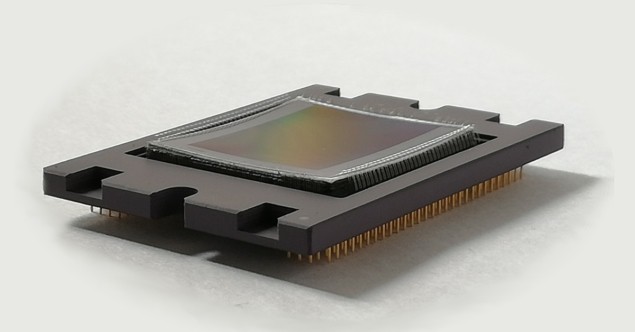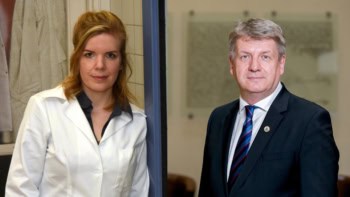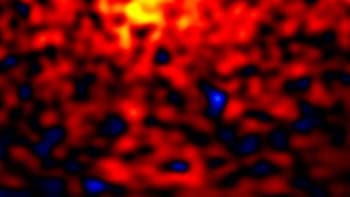
It’s not just televisions and smartphones that are looking forward to a curved future. Astronomers are now looking to put curved camera sensors into spacecraft exploring the depths of the Universe – since they promise to provide better imaging performance in a more compact package – and recent tests by researchers in the US and France show that prototype curved devices are more than up to the task.
In the study, Simona Lombardo of the Laboratoire d’Astrophysique de Marseille and her colleagues tested five CMOS chips that they curved into both concave and convex shapes, and with different radii of curvature. Using commercially available flat CMOS devices, the team first thinned the sensors to increase their mechanical flexibility and then glued them onto a curved substrate to create a spherical shape.
The researchers found that in almost all cases the characteristics of the curved sensors matched those of a flat CMOS chip – confirming that there was no degradation in performance as a result of the curving process. But they also found that the curved detectors generated a much lower dark current – one of the main sources of noise in image sensors – than the flat version.
“The dark current is due to intrinsic movement of electrons in the pixels of the sensor, even when not exposed to light,” explains Lombardo. “These electrons are then collected in the pixels and become indistinguishable from the electrons generated by the incoming light (from a star or a nice landscape).”
Aiming for longer exposure times
Lombardo cautions that the apparent reduction in dark current could simply be caused by the flat sensor and its curved counterparts coming from different batches. But a genuine enhancement resulting from the curved nature of the detectors could be good news for astronomers.
“In astronomy one is generally interested in measuring the most correct number of charges coming from an object (or its flux) and quite often the objects under study are faint and require long exposure times,” says Lombardo. “Having a lower dark current decreases the error in the measurement and, most importantly, allows longer exposure times.”
One of the reasons that curved camera chips hold promise for spacecraft engineers is that some past missions have had to use special optics to correct distortions produced by their inbuilt telescopes. A detector with a curvature that is able to cancel out this distortion would negate the need for those extra components, allowing the designers to make lighter, more compact orbiting observatories. And, given the enormous cost of launching every extra kilogram into space, that could lower the price tag of a mission. “Since there are fewer and smaller optical elements, the manufacturing becomes easier and the costs are reduced,” adds Lombardo.
According to the researchers, one project that could make use of curved sensor technology in its camera is the proposed MESSIER satellite – which would image, among other things, the extraordinarily faint tendrils of material that stretch vast distances around and between galaxies. “As the goal of the mission is the observation of large astrophysical structures, a wide field of view is required for the telescope,” says Lombardo. “Curved detectors allow [one] to greatly simplify the design while keeping the performances at [a] high level.”
Dave Walton, Head of Photon Detection Systems at UCL’s Mullard Space Science Laboratory in the UK, agrees: “I’m sure there’ll be other space missions that will want to use curved sensors. As with all space applications, the issues will be demonstrating that the technology is sufficiently mature, and that it will survive the rigours of spaceflight.”
Walton, who was not involved in the new study, continues: “Which proposed future missions will actually survive/evolve to reach the launchpad is always an interesting question, but some of the studies that might benefit from curved sensors include ESA’s GaiaNIR and NASA’s LUVOIR.”



